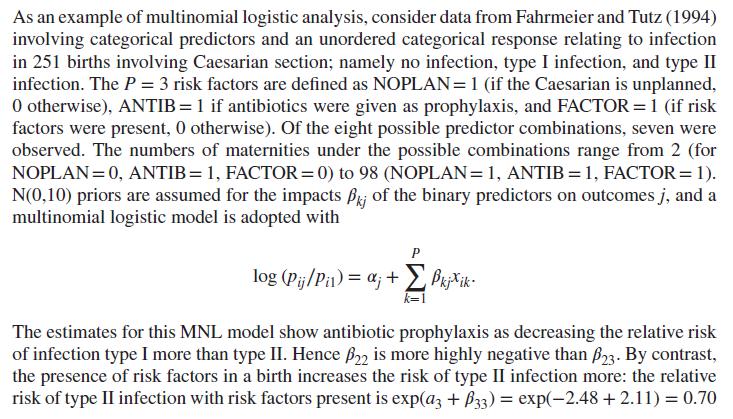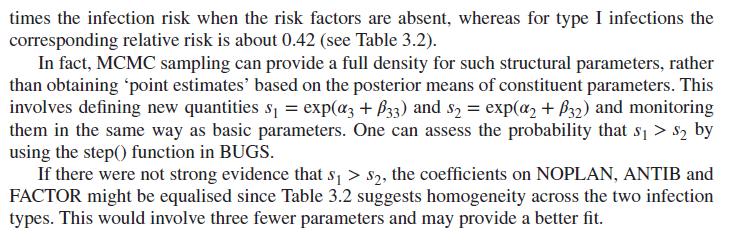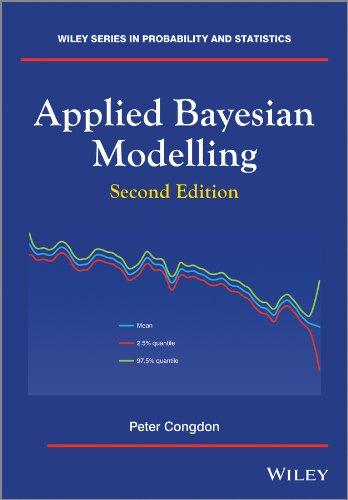Question:
In Example 3.7, define quantities \(s_{1}=\exp \left(\alpha_{3}+\beta_{33}\right)\) and \(s_{2}=\exp \left(\alpha_{2}+\beta_{32}\right)\), and by monitoring them obtain the probability that \(s_{1}>s_{2}\).
Data from Example 3.7


Transcribed Image Text:
As an example of multinomial logistic analysis, consider data from Fahrmeier and Tutz (1994) involving categorical predictors and an unordered categorical response relating to infection in 251 births involving Caesarian section; namely no infection, type I infection, and type II infection. The P = 3 risk factors are defined as NOPLAN = 1 (if the Caesarian is unplanned, 0 otherwise), ANTIB = 1 if antibiotics were given as prophylaxis, and FACTOR = 1 (if risk factors were present, 0 otherwise). Of the eight possible predictor combinations, seven were observed. The numbers of maternities under the possible combinations range from 2 (for NOPLAN=0, ANTIB = 1, FACTOR = 0) to 98 (NOPLAN = 1, ANTIB = 1, FACTOR = 1). N(0,10) priors are assumed for the impacts Pk of the binary predictors on outcomes j, and a multinomial logistic model is adopted with P log (Pij/Pil) = ; + Pkjxik- k=1 The estimates for this MNL model show antibiotic prophylaxis as decreasing the relative risk of infection type I more than type II. Hence B22 is more highly negative than $23. By contrast, the presence of risk factors in a birth increases the risk of type II infection more: the relative risk of type II infection with risk factors present is exp(a3 + P33) = exp(-2.48 +2.11) = 0.70









